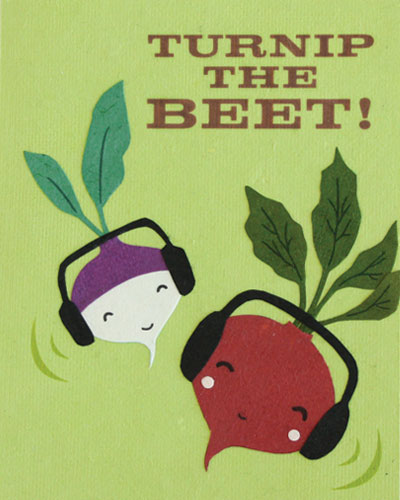Hey there! Ever heard of a nutritarian? Even though spellcheck doesn’t agree, it’s a word and a diet! A nutritarian’s goal is to eat the foods that are the most nutrient dense, or nutritious.
Nutrient density looks at the nutritional profile of a food item and the calories it contains. The higher the nutrient density, the healthier the food is. For example, 40 calories from a cup of kale and 40 calories from a cookie are not the same (sorry folks, a calorie is not just a calorie!). Kale will provide you with tons of vitamins, minerals and fiber in those 40 calories that the cookie lacks. Make sense?
Some of the most nutrient dense foods on the planet are green leafy vegetables. Can you guess why? They are super high in fiber and nutrients like vitamin C, K, A. And they also contain minerals like magnesium, iron and calcium and virtually no calories.
Kale and Thin Mints, an Unlikely Pair
Besides the green packaging, kale and thin mints don’t really have much in common.
1 cup of cooked kale has 36 calories and over 800% of the daily recommended value (RDV) of vitamin K, plus almost 100% of the RDV for vitamin C and A. 36 calories of kale also contains 5-10% of the RDV for calcium, iron, magnesium, potassium, fiber, vit E and B6, B3 and B1. Not bad! 36 calories and a ton of nutrients!
In comparison, one thin mint girl scout cookie has 40 calories and 1.5% of the RDV for iron.
You can see from this example that the nutrient density of kale is way higher than that of a thin mint. But that’s a kinda obvious comparison. Even certain vegetables are more nutrient dense than others. Here’s a cool graph from the CDC rating 41 different vegetables in nutrient density (scroll to the bottom of the link to see the chart.). I also like Dr. Furman’s chart which you can see below. A rating of 1000 means you’re getting the most bang for your buck. Here you can see that leafy greens have the highest score and the most nutrients per calorie.
What’s the bottom line?
The point is, a calorie is not just a calorie, and the healthiest way to eat is to make sure that the calories you are taking in are from nutrient dense foods. Eating nutrient dense foods aids the process of losing weight and maintaining weight loss, lowering blood pressure, blood sugar and cholesterol. Fiber found in nutrient dense foods also helps keep the digestive system healthy, reducing your risk for certain kinds of cancer. And the truth is, all whole foods (meaning foods found in their original unprocessed form) are nutrient dense. So shop the periphery of the market where the nutrient dense whole foods live, and pick up some leafy greens while you’re at it!
Dr. Fuhrman’s Nutrient Density Index
| Sample Nutrient/Calorie Density Scores | ||||
| Kale | 1000 | Sunflower Seeds | 64 | |
| Collard Greens | 1000 | Kidney Beans | 64 | |
| Mustard Greens | 1000 | Green Peas | 63 | |
| Watercress | 1000 | Cherries | 55 | |
| Swiss Chard | 895 | Pineapple | 54 | |
| Bok Choy | 865 | Apple | 53 | |
| Spinach | 707 | Mango | 53 | |
| Arugula | 604 | Peanut Butter | 51 | |
| Romaine | 510 | Corn | 45 | |
| Brussels Sprouts | 490 | Pistachio Nuts | 37 | |
| Carrots | 458 | Oatmeal | 36 | |
| Broccoli Rabe | 455 | Shrimp | 36 | |
| Cabbage | 434 | Salmon | 34 | |
| Broccoli | 340 | Eggs | 31 | |
| Cauliflower | 315 | Milk, 1% | 31 | |
| Bell Peppers | 265 | Walnuts | 30 | |
| Asparagus | 205 | Bananas | 30 | |
| Mushrooms | 238 | Whole Wheat Bread | 30 | |
| Tomato | 186 | Almonds | 28 | |
| Strawberries | 182 | Avocado | 28 | |
| Sweet Potato | 181 | Brown Rice | 28 | |
| Zucchini | 164 | White Potato | 28 | |
| Artichoke | 145 | Low Fat Plain Yogurt | 28 | |
| Blueberries | 132 | Cashews | 27 | |
| Iceburg Lettuce | 127 | Chicken Breast | 24 | |
| Grapes | 119 | Ground Beef, 85% lean | 21 | |
| Pomegranates | 119 | Feta Cheese | 20 | |
| Cantaloupe | 118 | White Bread | 17 | |
| Onions | 109 | White Pasta | 16 | |
| Flax Seeds | 103 | French Fries | 12 | |
| Orange | 98 | Cheddar Cheese | 11 | |
| Edamame | 98 | Apple Juice | 11 | |
| Cucumber | 87 | Olive Oil | 10 | |
| Tofu | 82 | Vanilla Ice Cream | 9 | |
| Sesame Seeds | 74 | Corn Chips | 7 | |
| Lentils | 72 | Cola | 1 | |
| Peaches | 65 | |||
Nutrient Scoring Method*
To determine the ANDI scores, an equal-calorie serving of each food was evaluated. The following nutrients were included in the evaluation: fiber, calcium, iron, magnesium, phosphorus, potassium, zinc, copper, manganese, selenium, vitamin A, beta carotene, alpha carotene, lycopene, lutein and zeaxanthin, vitamin E, vitamin C, thiamin, riboflavin, niacin, pantothenic acid, vitamin B6, folate, vitamin B12, choline, vitamin K, phytosterols, glucosinolates, angiogenesis inhibitors, organosulfides, aromatase inhibitors, resistant starch, resveratrol plus ORAC score. ORAC (Oxygen Radical Absorbance Capacity) is a measure of the antioxidant or radical scavenging capacity of a food. For consistency, nutrient quantities were converted from their typical measurement conventions (mg, mcg, IU) to a percentage of their Dietary Reference Intake (DRI).


